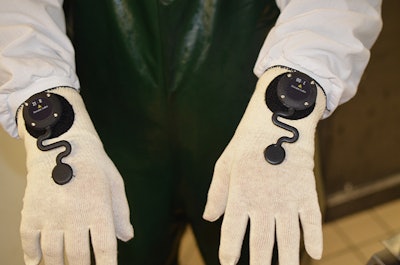
Wearable technology has the potential to continuous monitor and predict ergonomic and fatigue-related concerns in poultry processing workers, keeping employees safe and improving worker retention.
“Some of the most expensive and urgent issues facing the poultry industry revolve around their workforce: high turnover, injuries, low engagement and lack of visibility into individual productivity/performance. Wearables represent a unique opportunity to tackle each of these challenges by providing personalized data for visibility into and maximizing lean labor operations and safety,” said Dr. Jason Guss, CEO at Iterate Labs.
Guss is one of the many experts scheduled to speak at the Virtual Poultry Tech Summit, scheduled for October 20-22, 2020. This one-of-a-kind online event facilitates the transition of innovation technologies from researchers and entrepreneurs into commercial applications for the benefit of the poultry industry. Make plans to attend and take a look at the future of the industry.
Registration for the 2020 Virtual Poultry Tech Summit is now open.
How it works
The technology takes the form of an industrial wearable that attaches to gloves provide real-time connectivity for supervisors and management. A proprietary algorithm converts digitized arm and hand motion into insights to help meat processors improve labor productivity and effectiveness.
The wearables can also ensure that employee movements meet strict ergonomic guidelines. Injuries due to improper ergonomics have direct costs of $15 billion each year, according to Occupational Health and Safety Administration (OSHA) estimates.
“The biggest hurdle is the initial adoption, implementation and training required for appropriate use of the platform, and for workers to add this small task to their routine. The time to put on the wearable and take off each day is less than a minute of time. Generally, this takes less than a few hours to have team-members up and running,” Guss explained.
“The technology leverages wearables and artificial intelligence to digitize workforce motion and location to provide insights in real-time to managers, supervisors, and front-line workers to minimize downtime, prevent musculoskeletal injuries, define/refine standard work and accelerate training.”
Like what you just read? Sign up now for free to receive the Poultry Future Newsletter.


















